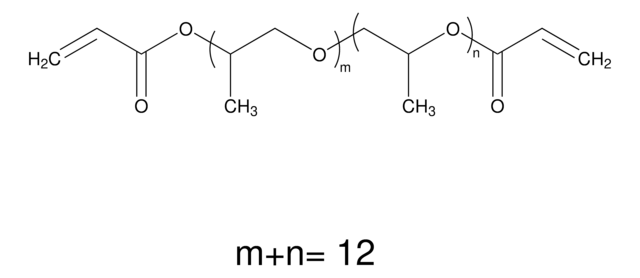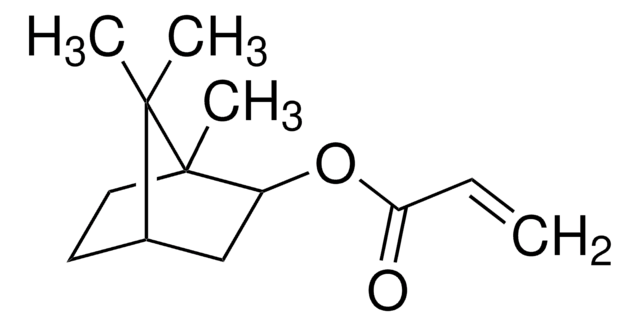Kluczowe dokumenty
246808
Trimethylolpropane triacrylate
contains monomethyl ether hydroquinone as inhibitor, technical grade
Synonim(y):
TMPTA
About This Item
Polecane produkty
klasa czystości
technical grade
Poziom jakości
gęstość pary
>1 (vs air)
ciśnienie pary
<0.01 mmHg ( 20 °C)
zawiera
monomethyl ether hydroquinone as inhibitor
współczynnik refrakcji
n20/D 1.474 (lit.)
gęstość
1.1 g/mL at 25 °C (lit.)
ciąg SMILES
CCC(COC(=O)C=C)(COC(=O)C=C)COC(=O)C=C
InChI
1S/C15H20O6/c1-5-12(16)19-9-15(8-4,10-20-13(17)6-2)11-21-14(18)7-3/h5-7H,1-3,8-11H2,4H3
Klucz InChI
DAKWPKUUDNSNPN-UHFFFAOYSA-N
Powiązane kategorie
Opis ogólny
Zastosowanie
- Poly(trimethylolpropane triacrylate/Al(PTMPTA/Al) nanocomposites by in situ solution polymerization.
- Cross-linkable acrylamide/crotonic acid water retainer hydrogels.
- Polymer electrolyte for dye-sensitized solar cells.
Hasło ostrzegawcze
Warning
Zwroty wskazujące rodzaj zagrożenia
Zwroty wskazujące środki ostrożności
Klasyfikacja zagrożeń
Aquatic Acute 1 - Aquatic Chronic 1 - Carc. 2 - Eye Irrit. 2 - Skin Irrit. 2 - Skin Sens. 1
Kod klasy składowania
10 - Combustible liquids
Klasa zagrożenia wodnego (WGK)
WGK 2
Temperatura zapłonu (°F)
382.1 °F - closed cup
Temperatura zapłonu (°C)
194.5 °C - closed cup
Środki ochrony indywidualnej
Eyeshields, Faceshields, Gloves, type ABEK (EN14387) respirator filter
Wybierz jedną z najnowszych wersji:
Masz już ten produkt?
Dokumenty związane z niedawno zakupionymi produktami zostały zamieszczone w Bibliotece dokumentów.
Klienci oglądali również te produkty
Global Trade Item Number
| SKU | GTIN |
|---|---|
| 246808-500G | 4061837404733 |
| 246808-100G | 4061825882437 |
| 246808-5G |
Nasz zespół naukowców ma doświadczenie we wszystkich obszarach badań, w tym w naukach przyrodniczych, materiałoznawstwie, syntezie chemicznej, chromatografii, analityce i wielu innych dziedzinach.
Skontaktuj się z zespołem ds. pomocy technicznej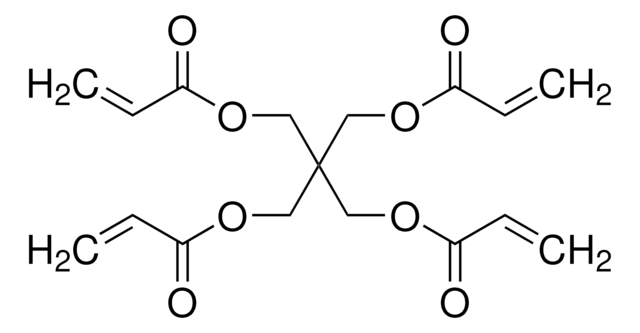
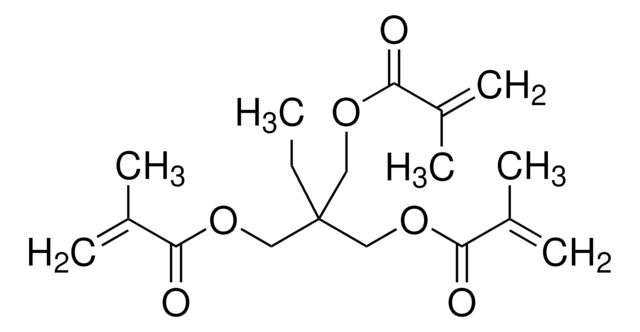

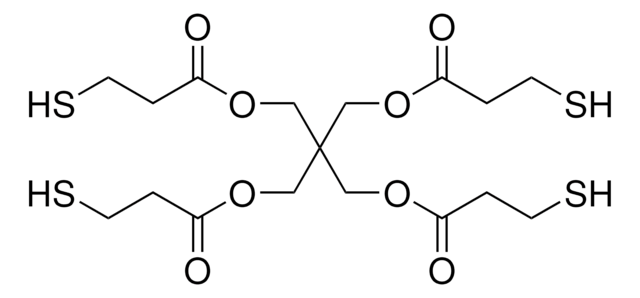
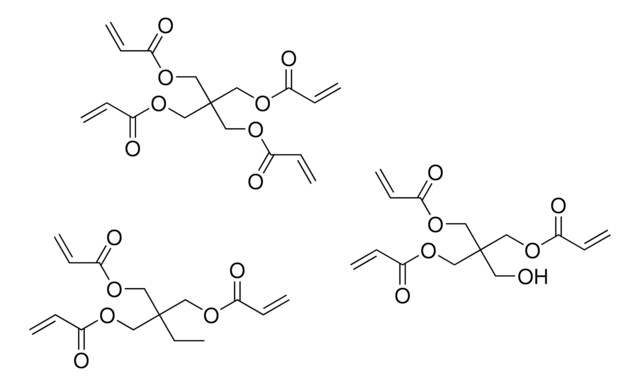
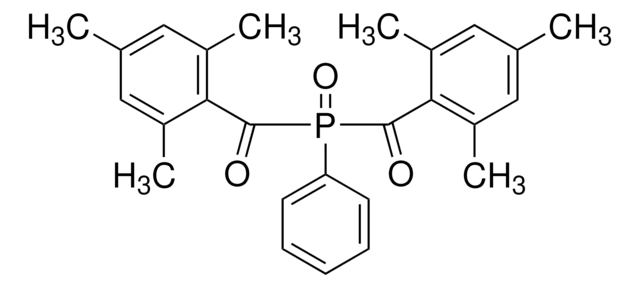


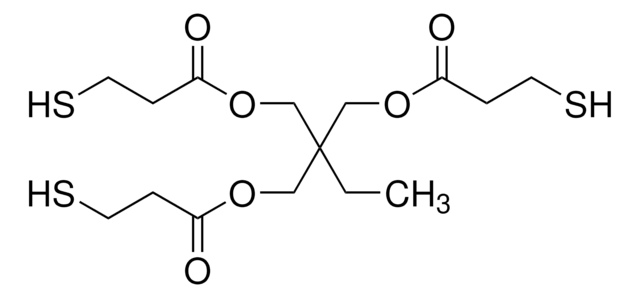





![Tris[2-(acryloyloxy)ethyl] isocyanurate](/deepweb/assets/sigmaaldrich/product/structures/254/494/1a620abc-8043-457f-92ec-87a959682438/640/1a620abc-8043-457f-92ec-87a959682438.png)
